- Home
- Antonia Fraser
Perilous Question Page 31
Perilous Question Read online
Page 31
Why would not the Attorney-General act with regard to such monotonous persecution? It was genial, worldly-wise Lord Althorp who pointed out the impracticability of such a step. The King complained that the ‘revolutionary spirit of the day’ meant that the ‘most violent and treasonable attacks’ levelled against the Sovereign were treated as though they were simply general criticisms, and thus immune from legal punishment. Althorp replied smoothly that no one could feel deeper regret or greater indignation than he did at such attacks. But there were two arguments against prosecution: in the first place it might not be successful; secondly, the names of the King and Queen would inevitably be dragged before the Courts of Law. That would be a most painful development for all loyal subjects. And it would be ‘detrimental to the interests of the Monarchy’.18 Perhaps we catch a note of respectful reproach behind these ultra-polite sentiments, given what the Whig Government had just endured.
On 7 June attendance in the House of Lords was even more sparse than it had been for the third reading. The precise timing of the Royal Assent was kept secret by the Ministers of the Crown – in the absence of the Crown itself – to avoid an appearance of triumphalism. A tepid atmosphere of anti-climax prevailed; but that was possibly welcome to the Government after the high drama of recent weeks. Neither the Duke of Wellington nor Lord Lyndhurst was present.
However, it is fair to say that it was Derby Day. The great national racing feast of the Derby, which happened to be run on 7 June, provided an excellent excuse for what Hobhouse called ‘our gay and gambling world’ to avoid the equally colourful contest, racing to a finish at Westminster. Perhaps there was some symbolism in the fact that the winner, St Giles, owned and ridden by Yorkshiremen, was subject to a tirade of objections at the end of the race, some concerning his real age and his dam’s pedigree, together with accusations of jockeys being bribed not to compete too hard; there were even – shades of Francis Place! – placards with the message ‘ST GILES NOT ENTITLED TO DERBY STAKES’. But in the end, despite all the difficulties, the Jockey Club found for St Giles and his northern team. In the same way the Reform Bill had become law.
One peer who was present in the Lords at the time of the assent was William IV’s younger brother the Duke of Sussex, who had shown reforming sympathies all along; in fact the King had begun to see him as the Philippe Égalité of his own family, in reference to that infamous Bourbon (father of King Louis-Philippe) who had voted for the execution of Louis XVI. The Duke remained behind a curtain as the Commissioners, headed by the Lord Chancellor, including Grey, Durham and Holland, indicated assent on behalf of the King. Holland, as he sat with the others in his robes on the bench, reflected his satisfaction that he was among ‘members of the old Opposition who uniformly maintained the principles of peace and reform’. When the brief ceremony was over, the Duke was heard to say loudly: ‘Thank God the deed is done at last. I care for nothing now – this is the happiest day of my life.’19 This at least provided some contrast to the current unpopular attitudes of the ruling House.
It is true that one old Tory responded to this by lifting up his hands in horror and exclaiming involuntarily: ‘Oh Christ!’ And shortly after the Clerk of the House of Lords announced the Royal Assent with the traditional words dating back to the Middle Ages, le Roi le veult, a note was handed to him. It read: ‘Surely it would have been more appropriate to have said La canaille le veult.’20 Here was another reference to the events of the French Revolution; but instead of citing the fate of Louis XVI and Marie Antoinette, as the people’s protests did, it made a bitter allusion to a time during which the lowest class of people – la canaille, taking its meaning from the Latin for dog – had held sway. It was certainly a libel to describe Attwood, Francis Place and their respective followers as la canaille. Here were highly intelligent men, capable of intricate organization in the cause in which they profoundly believed, their idealism certainly matching that of the Whigs who came to work with them. Yet the snide comment, in its reference to the loudly expressed wishes of much of the population, had some truth in it. The role of public opinion – no need to designate the people as la canaille – had been crucial.
A correspondent in The Times the day after the Royal Assent was given, signing himself merely ‘J.A.’, called for a penny subscription to erect a triumphal arch.21 This would commemorate the men who fought for ‘the people’s second Bill of British rights’. ‘J.A.’ suggested that the central focus should be on William the Reformer – who elsewhere in the paper was excoriated for his failure to go down to Parliament in person. The Times had called for the King to indulge his people ‘with a spectacle of imperial state’ which they could have applauded, thus wiping out the bad impression given by previous unruly behaviour; the august paper was duly shocked by the King’s refusal to take its advice. In a more generous mood, ‘J.A.’ wanted William the Reformer to be supported by statues of Grey, Brougham, Althorp and Russell – all of course lords, one way or another. It was not, however, suggested that statues of Attwood and Francis Place should be part of the group.
EPILOGUE
THIS GREAT NATIONAL EXPLOIT
‘Thus ends this great national exploit. The deed is done.’ –
Sir John Hobhouse, 7 June 1832
A vast celebratory banquet was held at the Guildhall on 11 July 1832. The great hall was hung with scarlet cloth, brilliantly lit, with musicians in the gallery. There was much clapping of hands, stamping of feet and thumping on tables. Lord Brougham made one of his speeches, in which he parodied ‘the Bill, the whole Bill, and nothing but the Bill’ by referring to ‘the Law, the whole Law, and nothing but the Law’. Macaulay was among those present (he told his sisters that he had consumed two dishes of turtle soup).1 Here were the Whigs in their hour of triumph, and happily they were recorded by Benjamin Robert Haydon, his second attempt at a great picture of the progress of the Reform Bill, and destined to be more successful than the Newhall Hill effort, for which he had not secured a subscription.
When Haydon called on Lord Grey, he was readily admitted into the presence of the Prime Minister. Grey showed considerable enthusiasm for the project of painting something connected to Reform, although he pointed out that it would not be ‘delicate’ for him to head the subscription list. It was Grey who suggested that Haydon painted the impending grand City Dinner, and instructed him to approach the Lord Mayor to give him a good place. Even if Grey passed over Haydon’s sketch of Newhall Hill without comment – Haydon got the impression that he did not think the unions were suitable artistic subjects – he was lavish in his enthusiasm for this new project. He gave Haydon a commission for 500 guineas and told his wife: ‘I mean this for Howick’, to which Lady Grey replied that the picture would stay for ever in their family.* Grey was similarly generous with his time for his individual sitting, and at the end ‘dear Lord Grey’ shook Haydon heartily by the hand.
Later Grey called on Haydon, and showed himself ‘unfazed’ by the Haydon children running round; ‘he seemed quite used to children’ (which was of course perfectly true: Grey being that friendly paterfamilias whose own children were allowed to call him by his name). In general Grey was delighted with the picture, and agreed that ‘the most able supporters’ of the Bill should be prominently displayed, without regard to their actual seating arrangements.2
In this way Haydon had a splendid time capturing the Whig heads: Melbourne, for example, was ‘a fine head and looked benign and handsome’. Althorp he found ‘the essence of good nature’; Palmerston had a good-humoured elegance; Lansdowne showed considerable knowledge of literature with great unaffectedness; Richmond had a deep-toned colour and a keen look. As for Brougham, with his startling, almost savage appearance, the artist would describe him as ‘like a lion reposing in the possession of power, as years ago he had been a tiger in pursuit of it’. When it came to conversation, Haydon had the most significant exchange with Lord John Russell, ‘an interesting, mild and determined creature’, to whom he suggested that ‘to
be Reformers, now is the fashion’. Lord John agreed: ‘People find out now they have been Reformers but never thought of it.’ The finished picture is a splendid triumphalist affair, with flags and swords presiding over the vast array of banqueters. Appropriately enough Lord Grey, with his unmistakable appearance, the domed head and skull beneath that ‘weighed down’ the youth of the young reporter Charles Dickens, is on his feet.3
The picture of the Guildhall Banquet was not the only artistic work commemorating the Bill. A remarkable, bold assertion of the Bill’s place in history was the marble relief commissioned from Francis Chantrey by the long-standing Whig MP Thomas Coke of Norfolk, to be installed at his great country house at Holkham. Coke, a personal friend of Lord Grey (as he had been of Charles James Fox) was now nearly eighty; always a keen reformer, he announced his retirement from Parliament on the actual day the Bill was passed, and a few years later was created Earl of Leicester.
Among the four ‘Political Reliefs’ at Holkham, including ‘The Trial of Socrates’, was to be ‘The Signing of the Magna Carta’, which actually depicted the signing of the Reform Bill of 1832, showing William IV as King John. Over him looms another close friend of Coke, Henry Bathurst, Bishop of Norwich, known as the Liberal Bishop because he had voted for Reform (as well as Catholic Emancipation). In a reference to Magna Carta, the Whigs were shown as barons and knights, with Grey once again prominent; Brougham, Durham, Althorp, Russell and the Duke of Sussex are also visible, as is Coke himself, looking flatteringly youthful, arm round a page in the shape of his son, born to a late second marriage and aged only ten in 1832.
As against this magnificent linking of heroic past and present, the many commemorative jugs, pots and basins appealed to a different public, but one which had contributed after all in its own way to the triumphant result. The rising use of printed decoration on ceramics meant that pottery firms in Staffordshire and London could respond quickly to the turn of political events. Jugs had the stirring words of the Union songs on them, such as ‘Lo! we answer! See we come!’ One plate referred to William IV as ‘the only Royal Reformer since Alfred’, while another plate with clasped hands symbolized the combining of the various political unions.4
The most popular depictions, taken from contemporary prints, were of Grey himself, Russell and Brougham. With his famous elongated truncheon of a nose, Brougham was considered an ideal subject for a stoneware cordial flask, made by skilled potters in Derbyshire, of which impressive examples survive; one has to bear in mind, looking at them, that the cordial which was the preferred beverage of the Lord Chancellor, making his torrential speeches in the House of Lords, was heavily laced with wine. With possibly less relevance, Althorp and Grey were made into gin flasks, and there were other images for toothbrush boxes.
Countrywide rejoicings involved village celebrations, larger gatherings on hills and heaths and other manifestations of popular pleasure. One typical dinner was held on Scorton Green in north Yorkshire, with booths and banners to enliven it. The local magnate, the Earl of Tyrconnel, commented feelingly in his Diary: ‘A committee for the Reform dinner came this evening and screwed £20 out of me for expenses.’ As a result of his generosity, about 400 people sat down to dinner, as well as 300 children and 150 ‘strangers’.5 ‘Reform’ and ‘Liberty’ were the two watchwords. There were banners galore with simple legends like ‘SEE THE CONQUERING HEROES! RUSSELL BROUGHAM GREY’ and more complicated Shakespearean ones: ‘THE BATTLES WON – BRITTANIA’S SONS ARE FREE AND DESPOTS TREMBLE AT THE VICTORY’. ‘ST CRISPIN’. ‘WE ARE ALL TRUE TO THE LAST’. The numerous medals often showed a variation on the date 7 June 1832, and mentioned the two majorities, 84 in the Lords, 116 in the Commons. The notorious rotten borough of Old Sarum was also commemorated: ‘OLD SARUM DESERTED IN THE YEAR 1217, DISENFRANCHISED JUNE 7 1832’.
Only the office of the Lord Chamberlain remained lugubriously unenthusiastic where artistic celebration was concerned. Asked in June whether he would strike out the word ‘Reform’ in a work submitted to him, the Examiner of Plays replied that he would not. He would say instead: ‘I think you had better omit it; I advise you to do it for your own sakes, or you will have a hubbub.’ (He was apparently unaware that a good hubbub is exactly what many playwrights aim at.)6
On 23 June, in a letter to the Duke of Buckingham, Wellington pronounced quite definitely: ‘The government of England is destroyed.’ He added that a Parliament would be returned by means of which ‘no set of men whatever would be able to conduct the administration of affairs, and protect the lives and properties of the King’s subjects’. This was an extreme view, in line with Wellington as self-constituted Cassandra throughout this period. Of course he was not the only one with such an intense revulsion against Reform, but as a leading political figure he had been from the first in a position to affect the outcome. A celebrated example of one whose views remained romantically obsessed with the past, to the detriment of this particular change, was William Wordsworth, now in his early sixties. In a letter of February 1832 he had written that ‘Our Constitution was not preconceived and planned beforehand – it grew under the protection of Providence – as a skin grows to, with, and for the protection of Providence. Our Ministers would flay this body, and present us, instead of its natural Skin, with a garment made to order . . .’ He went on to compare this garment to the Shirt of Nessus which drove Hercules to madness and self-destruction, and ended by suggesting that the Ministers had already gone far towards ‘committing a greater political crime than any committed in history’.7 *
The views of King William IV were not so extreme as either of these great men, but they were not particularly sanguine either. During the summer which followed the passing of the Reform Bill, he continued to shudder at the possibility of the Bill being a mere ‘stepping-stone’ to other reforms. William IV was encouraged in his fears by the declarations of Joseph Hume who, having openly disapproved of the Bill in its current state, now foretold further Radical reforms. From the other angle, the Duke of Cumberland preyed upon the royal imagination on the subject of the political unions, in a typically irascible communication in which he criticized Lord Grey strongly for defending them in the House of Lords. Enclosing a paper signed by Attwood, Cumberland wrote on 16 June that he felt certain that ‘if some measure is not resorted to to put an end to these Political Unions, they will destroy all government’.8
In the House of Lords, Grey had kept a straight bat where the unions were concerned, as the Whig Minister Lord Duncannon, patron of cricket, would have said. Grey smoothly replied that nothing that was legal would be banned – and in any case he trusted to the good sense of the people of England. Grey’s response to the King over Cumberland’s objections showed in part, it must be said, a certain aristocratic naïveté . . . Given that the Bill had been passed, ‘he trusts and believes that, if not irritated by an injudicious interference, these Unions will die away’. He was on safer ground when he pointed out that nothing was more likely to unite people behind the unions than an ‘impolitic’ attempt to suppress them.9
The King’s mood was not improved when a stone was thrown at him at Ascot races; he was only saved from actual physical harm by the padding in his hat. Nor did the attacks on the Queen, ranging from satirical references to the obliteration of her image over taverns, cease. At least the King could sympathize with his former Prime Minister the Duke of Wellington, who suffered attacks by the mob on 18 June. ‘A strange day to choose,’ observed the Iron Duke drily – for it was of course the anniversary of the Battle of Waterloo.10
Yet in general, the critical attention of the country had passed away from the Reform Bill itself in Parliament; this despite the fact that the separate Irish and Scottish Reform Bills, and the Boundary Bill (which Lord Lyndhurst had used to defeat the Government back in April 1831) were still going through Parliament. It was not until 27 June that the whole Reform Bill had been passed throughout the British Isles. The way was now clear for the first General Election to be held unde
r the new rules.
Under the circumstances, an atmosphere of temporary contentment prevailed in both groups who could be roughly termed liberal. Joseph Hume was able to predict further reforms, including of the Church; the Whigs on the other hand were confident that Reform would produce an ideal House of Commons, representative of the people indeed – but not actually of the people. The Whigs believed that the stepping-stone of the Bill had led them safely over the abyss. Hume was equally sure that it was leading towards a more Radical future on the other bank. Francis Place shared Hume’s view that further reforms, aiming at an actual republic, would surely follow.
Whig life resumed its characteristic round. Lord Grey’s physical appearance, which had verged on the cadaverous in recent months, improved. Lord Althorp rushed to Wiseton for a precious three weeks with his prize bulls. He was visited by the Duke of Richmond and Sir James Graham and all three went on to Doncaster Races, riding there and back in four days, a distance of 100 miles, happily partridge-shooting in between. Lord Durham, however, was dispatched on a diplomatic mission to Russia to handle the Belgian question: revolutionaries are not always easy to deal with and it is possible that his dispatch owed something to Melbourne and Palmerston’s desire to get rid of their awkward colleague. In view of his family tragedies, Durham had reason to be glad of the distance.
Durham confessed himself sick at heart to Grey and talked of his yearning to retire (although ‘Radical Jack’ would in fact go on to act with admirable energy as Governor General of Canada). Perhaps if he had not been so closely connected to Lord Grey, by affection as well as marriage, Durham would not have survived so long in the Cabinet or even been appointed there in the first place, given his reputation for truculence. And yet the lesson of history would show that Durham was right about Reform, and the more tepid Melbourne and Palmerston wrong. And without the stern application of Durham’s conscience, perhaps Grey would not have stayed as firm as he did. Another difficult colleague, Lord Brougham, found that his trouble-making in the Cabinet imperilled and finally sank his actual political career. He ceased being Lord Chancellor in November 1834 when the Whigs went out of office, and held no further position in government. Yet his reforming zeal, his best quality apart from his native brilliance – so ably expressed in his flights of fierce oratory – continued unabated, as his agitation over the abolition of slavery and the need for public education demonstrated.

 Warrior Queens
Warrior Queens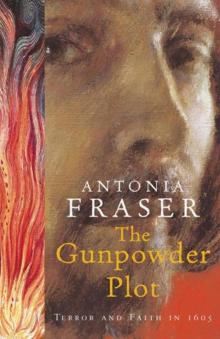 The Gunpowder Plot
The Gunpowder Plot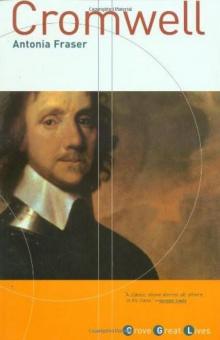 Cromwell
Cromwell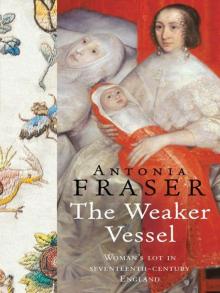 The Weaker Vessel: Women's Lot in Seventeenth-Century England
The Weaker Vessel: Women's Lot in Seventeenth-Century England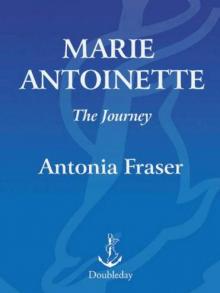 Marie Antoinette: The Journey
Marie Antoinette: The Journey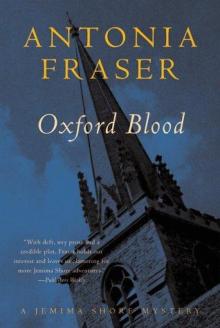 Oxford Blood
Oxford Blood Your Royal Hostage
Your Royal Hostage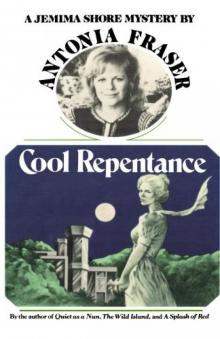 Cool Repentance
Cool Repentance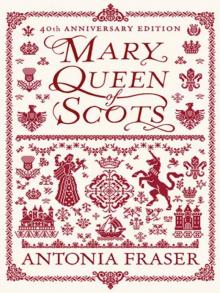 Mary Queen of Scots
Mary Queen of Scots Political Death
Political Death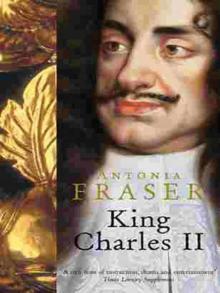 Royal Charles: Charles II and the Restoration
Royal Charles: Charles II and the Restoration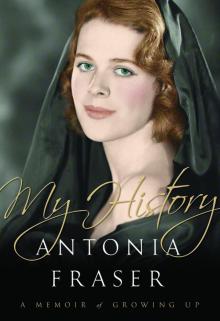 My History: A Memoir of Growing Up
My History: A Memoir of Growing Up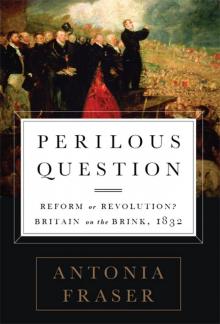 Perilous Question: Reform or Revolution? Britain on the Brink, 1832
Perilous Question: Reform or Revolution? Britain on the Brink, 1832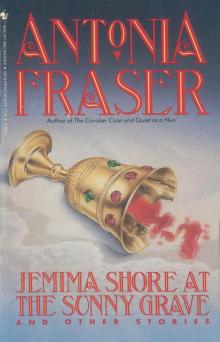 Jemima Shore at the Sunny Grave
Jemima Shore at the Sunny Grave A Splash of Red
A Splash of Red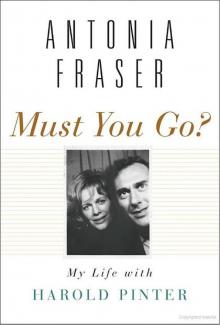 Must You Go?: My Life With Harold Pinter
Must You Go?: My Life With Harold Pinter Love and Louis XIV: The Women in the Life of the Sun King
Love and Louis XIV: The Women in the Life of the Sun King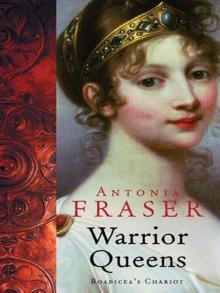 The Warrior Queens
The Warrior Queens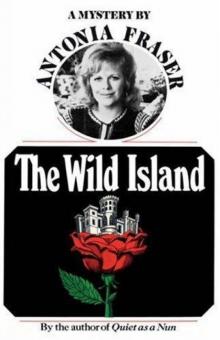 The Wild Island
The Wild Island Quiet as a Nun
Quiet as a Nun Perilous Question
Perilous Question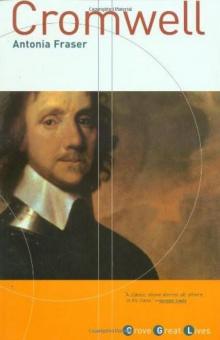 Cromwell, the Lord Protector
Cromwell, the Lord Protector Gunpowder Plots
Gunpowder Plots The Wild Island - Jemima Shore 02
The Wild Island - Jemima Shore 02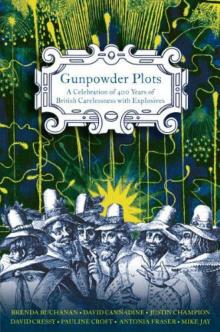 Gunpowder Plots: A Celebration of 400 Years of Bonfire Night
Gunpowder Plots: A Celebration of 400 Years of Bonfire Night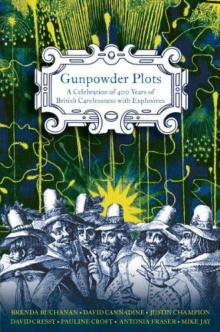 Gunpowder Plots_A Celebration of 400 Years of Bonfire Night
Gunpowder Plots_A Celebration of 400 Years of Bonfire Night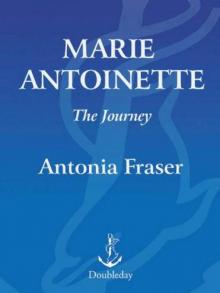 Marie Antoinette
Marie Antoinette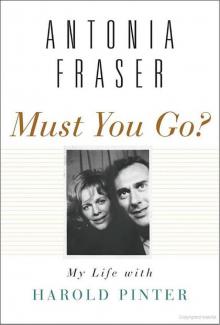 Must You Go?
Must You Go?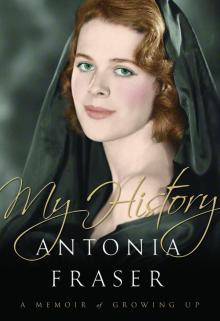 My History
My History